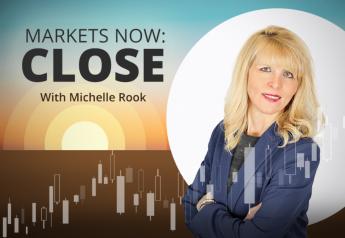HSAs Offer Health Care, Retirement Savings

Health insurance coverage and healthcare costs are among the greatest challenges for self-employed Americans, including farmers.
One avenue that provides for cost containment combined with the opportunity to save for the future is the Health Savings Account (HSA). “More people are becoming aware of HSAs and using them as a strategic approach to managing their healthcare,” said Nathan Link, Employee Benefits and Individual Health Specialist for PDCM Insurance, Waterloo, Iowa.
To qualify for an HSA, you need to carry a High Deductible Health Plan (HDHP). According to the IRS website, that’s a health insurance plan with a deductible of no less than $1,400 per person or $2,800 per family, with a maximum annual deductible and other out-of-pocket expenses (like co-pays) of $7,000 per person and $14,000 per family.
“HDHPs often have lower monthly premiums than traditional health insurance plans,” said Link. “Clients can save the difference into their own HSA account and use those funds to pay out-of-pocket expenses as needed. With traditional plans, you pay a higher cost whether you use the services or not. An HSA allows you to keep that money if you don’t have to use it.”
As a savings tool, HSAs offer a triple tax advantage*, in that:
- Money deposited into an HSA is not taxed.
- Account balances are allowed to grow tax-free; and
- Funds can be withdrawn tax-free, provided they are used to pay for Qualified medical expenses, including those not covered by health insurance, like vision and dental care.
While your HDHP will be accessed through a private agent or the Healthcare.gov marketplace, you will have to open your HSA account separately through a financial institution. Many banks and credit unions offer them, and most provide options to invest your balance in stocks or mutual funds for larger growth opportunities.
Employers of a spouse working off the farm also may offer an HDHP/HSA package, in which case they likely will have the HSA structure already set up for the company’s employees.
HSAs are individual accounts. If you are married, the account is in one spouse’s name, but the fund can pay for expenses for your spouse and children covered on your health insurance policy. The annual contribution limit applies to the entire couple or family. In 2021, it is $3,600 per individual or $7,200 per family. That limit includes contributions that may be made by an employer.
If you will be 55 or older by the end of the tax year, you can contribute another $1,000 annually as a “catch up” contribution. If your spouse also is 55 or older, he or she can open a separate HSA and contribute another $1,000 to that account, according to OPTUMbank.
When you start using Medicare – typically around age 65 – you can no longer contribute to an HSA. But at this point you can continue to utilize the funds tax-free for medical expenses and/or your Medicare Part B or Part D premiums. You also have the option of using the money for any other purpose you please after 65. But those funds will be taxed as regular income, just like a traditional IRA.
“Before age 65, it’s never a great idea to use your HSA as an emergency fund for non-medical expenses,” advised Link. “You’ll be assessed a 20% penalty, plus the withdrawals will be taxed as income at your regular rate.”
You also cannot use your HSA funds to pay health insurance premiums before age 65. You can, however, tap them tax-free to pay premiums for long-term care insurance.
“If you can cash-flow your medical expenses and leave your HSA untouched, it will be a tremendous retirement savings vehicle thanks to its many tax-advantage features,” shared Link. “But even if you can’t, there is great peace of mind knowing that you have the funds set aside to cover medical expenses if you need them, and that you can maintain control of that money if you don’t.”
*There are exceptions to these exemptions in a few states. New Jersey and California assess tax on both your HSA contributions and they earnings they generate. Tennessee and New Hampshire tax earnings only.







